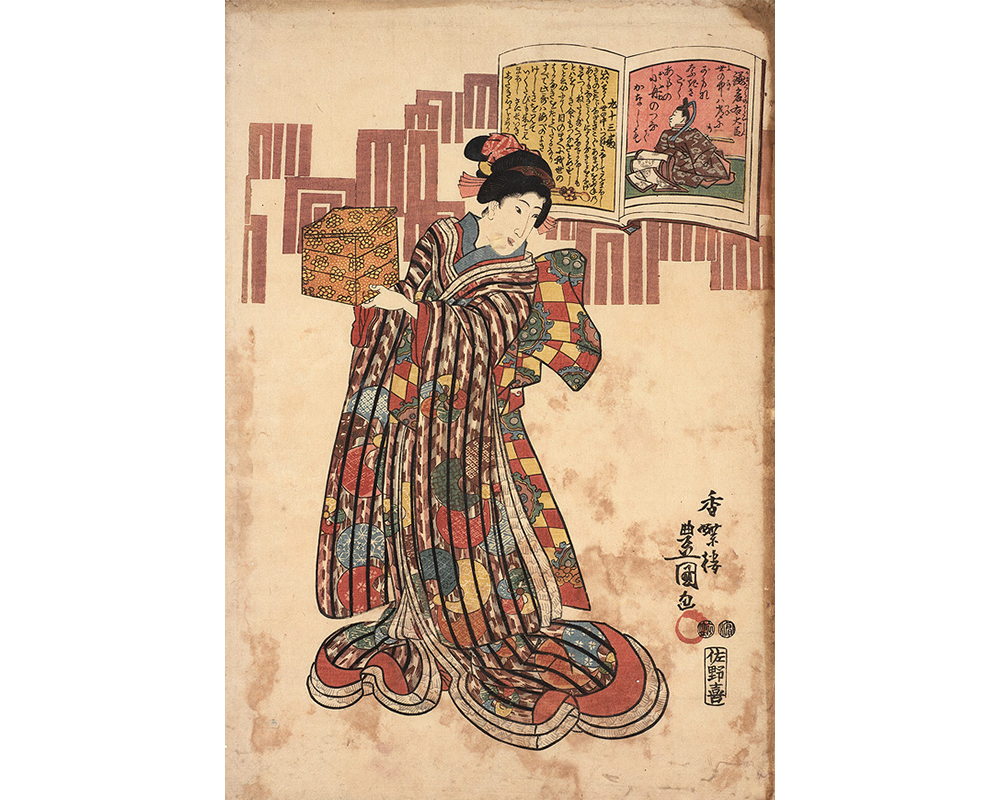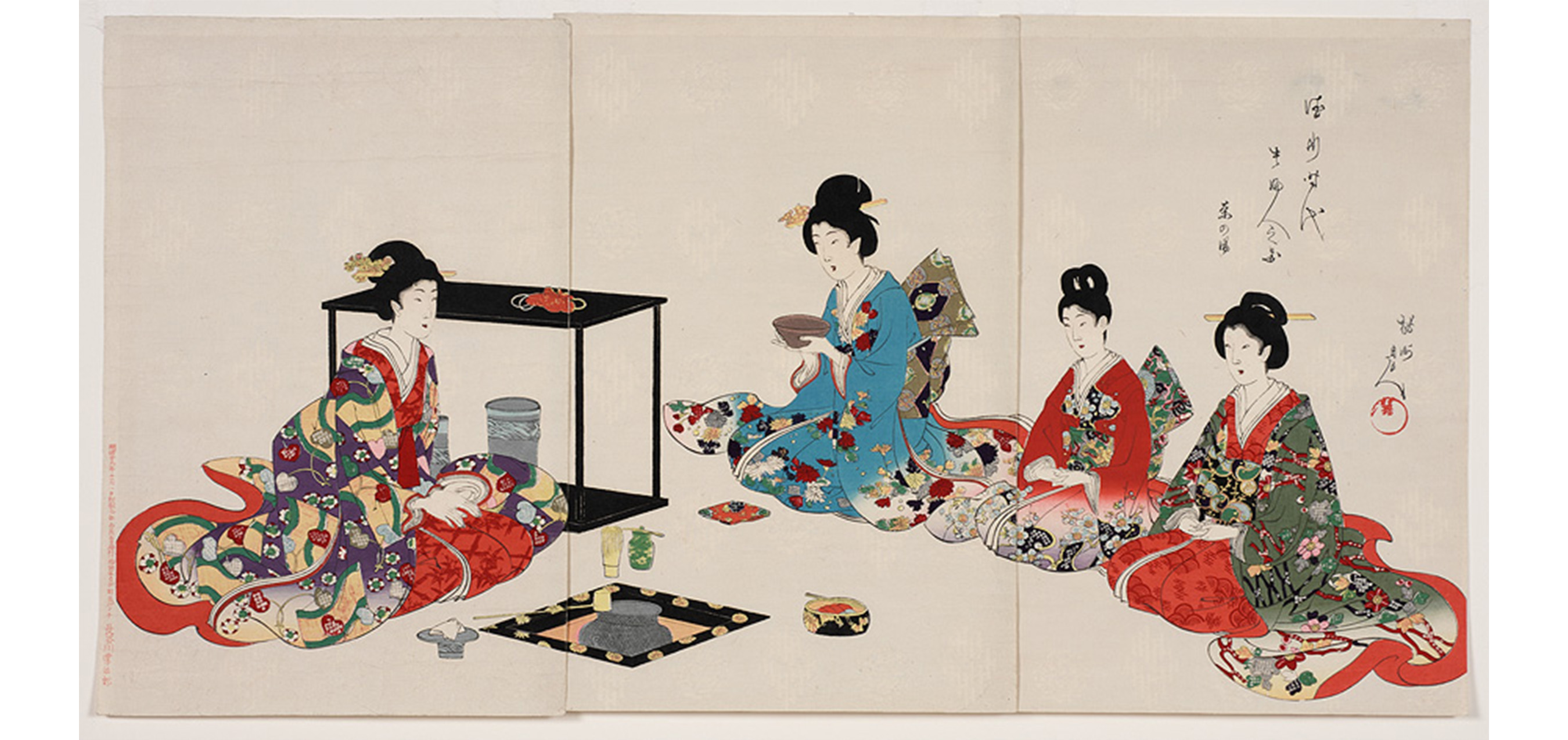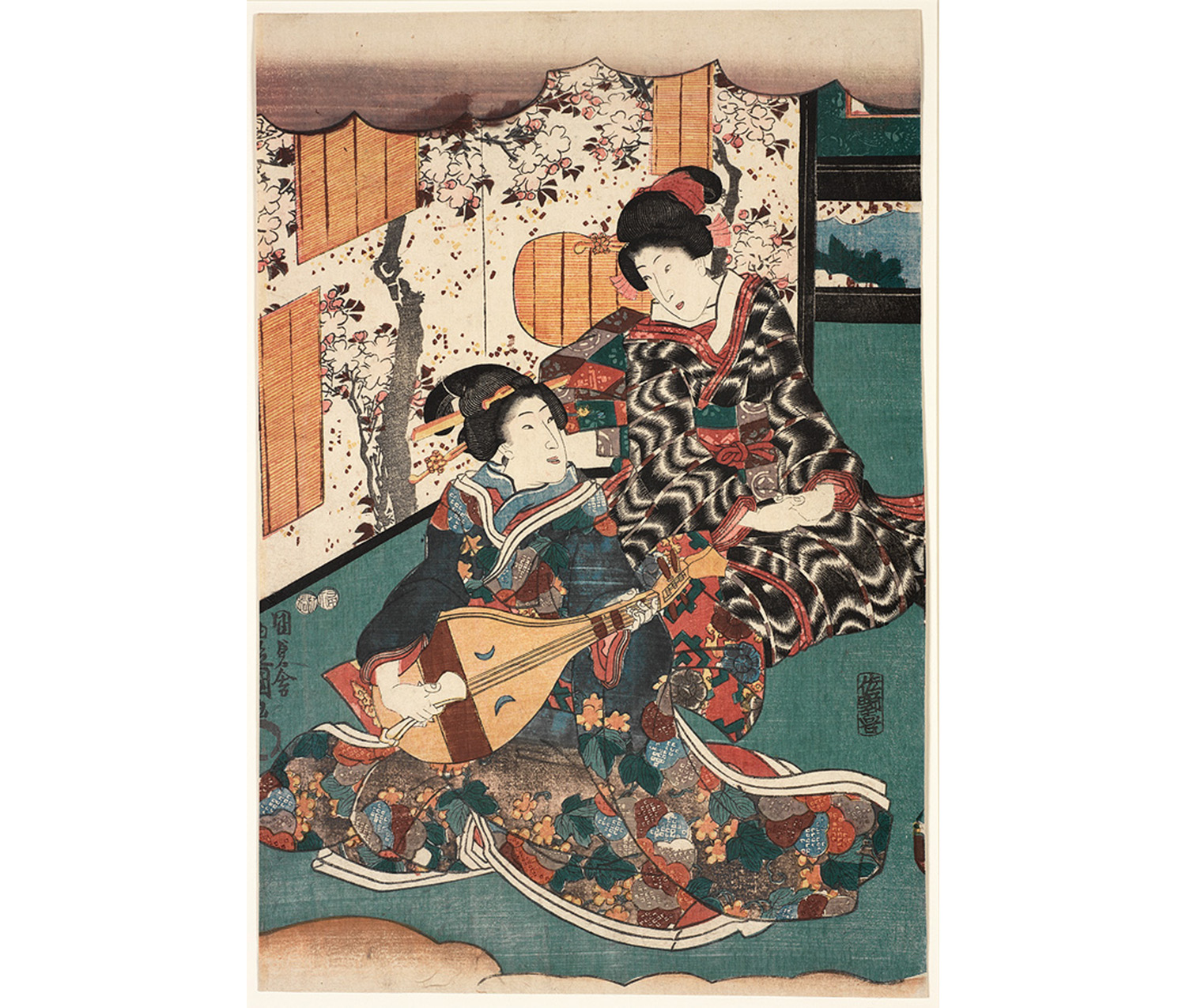
Student Picks: Beauty by Design - The Art of Japanese Kimono
Student Picks is a SCMA program in which Smith students organize their own one-day art show using our collection of works on paper. This month’s student curator and guest blogger Suzu Sakai ‘16 discusses her show “Beauty by Design: The Art of Japanese Kimono” which will be on view this Friday, April 5 from 12-4 PM in the Cunningham Center for the Study of Prints, Drawings, and Photographs. Suzu will also be presenting an original miniature kimono designed specifically for this exhibition, along with a brief and fascinating account of the history of Japanese kimono design. We hope to see you here!
Despite being a Japanese, I have never been as interested in learning about my own traditional culture as much as foreign cultures. However, my way of thinking changed last semester, in taking Smith College’s Costume Design I class. While working on a project which involved researching feudal Japanese costume, I fell in love with the beautiful and exotic Japanese kimonos. This helped me realize how wonderful and serene Japanese culture was.
In my Student Picks exhibition Beauty by Design: The Art of Japanese Kimono,I have selected certain woodblock prints focused on the design of kimonos, mainly during the 1800s. These woodblock prints feature women’s kimonos and kimonos worn as costumes by actors, who at the time were all men.
The term kimono, the T-shaped traditional Japanese garment we know today, in Japanese means simply ‘a thing to wear.’ This term kimono was actually invented in the Meiji era (1868-1911), when Westerners asked the Japanese to name their style of dress. The history of the kimono goes as far back as the eighth-century, when the Emperor proclaimed that all garments in the Imperial Court were to be worn strictly overlapped from right to left. This style reflected the style in the Tang dynasty (618-907) of China, and it was in the Heian period (794-1185) that the Japanese started developing their own distinctive culture and style.
Looking at these artworks on Friday, I hope viewers will leave with some kind of interest in Japanese culture, and may be even be as mesmerized by the beauty and richness of these kimonos as I am.

Chikanobu Toyohara. Japanese, 1838–1912. Tea Ceremony, 1896. Woodcut printed in color on three sheets of medium weight cream-colored paper. Bequest of Henry L. Seaver. Photography by Petegorsky/Gipe. SC 1976.54.455.

Toyota Hokkei. Japanese, 1780–1850. Surimono: The Hell Courtesan (Jigokudayu), from series Three Prints of Courtesans, mid 1820s. Woodcut printed in color on embossed paper. Gift of Mr. and Mrs. James Barker (Margaret Clark Rankin, class of 1908) "The Margaret Rankin Barker - Isaac Ogden Rankin Collection of Oriental Art." Photography by Petegorsky/Gipe. SC 1968.478.

Utagawa Kunisada. Japanese, 1786–1865. Two Seated Geisha, One Playing the Biwa, ca. 1850. Woodcut printed in color on paper. Gift of Helen D. La Monte, class of 1895. Photography by Petegorsky/Gipe. SC 1970.14.2.

Ichiyusai Kuniyoshi. Japanese, 1798–1861. Geisha by the Sumida River from Popular Customs of the Present Age (Tosei Fuzoku Konomi), 1830s. Woodcut printed in color on paper. Gift of Mr. and Mrs. James Barker (Margaret Clark Rankin, class of 1908) "The Margaret Rankin Barker - Isaac Ogden Rankin Collection of Oriental Art." Photography by Petegorsky/Gipe. SC 1968.499.